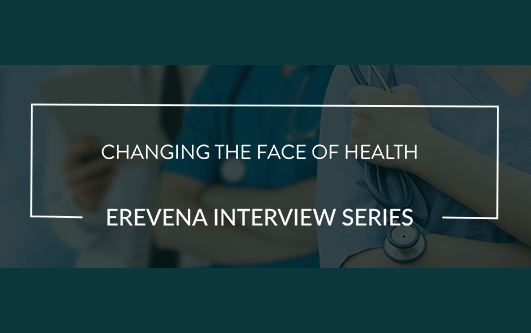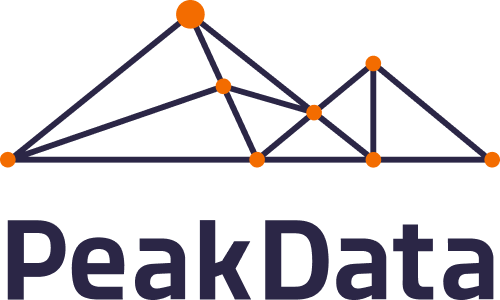Having worked on the frontline of medical practice, Michel Van Harten has taken his expertise into the world of drug development and clinical trials as Chief Operating Officer of myTomorrows. He talks to Hazel Mulhare, Partner at Erevena about how myTomorrows is breaking down barriers with its mission to enable every patient to have earlier and better access to all possible treatment options.
What does myTomorrows do?
With a commitment to ‘making drug development serve everyone better’, we offer a platform for pre-approval treatment. There are two sides to this: the first focuses on patients and their physicians, and the second focuses on pharmaceutical companies engaged in development and clinical trials.
In the first instance, we provide free information on clinical trials and expanded access (EA) programs around the world to patients and their physicians who have exhausted all other treatment options. This is about informing patients about drugs in development and how these can be accessed. In the second instance, we help pharma companies find patients and manage their trials and EA programs. We also work with the pharma companies on collecting the data that is becoming more and more relevant in discussions about product safety and efficacy with payors and regulatory authorities (FDA and EMA).
Can you share some company background with us?
Our CEO Ronald Brus set up the company in 2012 after facing a similar situation to those patients we’re helping today. Despite being a physician and CEO of a biotech company who knew a lot of people in the industry, he was unable to access a promising immunotherapy drug in time to help his father who was suffering from lung cancer. This triggered something in Ronald and the seed for myTomorrows was sown.
What about you – what was your motivation to join?
I’d been working on the clinical side in the Netherlands Cancer Institute and had experienced lots of patients, especially young people, who had run out of options. I couldn’t offer them anything. What myTomorrows was doing had the potential to impact a lot of lives and change the drug development space, which was very attractive to me.
How did people find information about their options previously?
With no central listing of available options, patients mainly relied on their physicians – and still do. As well-informed as physicians are, not having a central go-to database clearly has its limitations. You can imagine that searching for suitable treatment options outside of standard of care – and perhaps the trials conducted “on site”- is extremely laborious, often difficult and has to be done in addition to the physician’s clinical duties. This creates what we call an information barrier, which in the end does not serve the patient well.
How has tech enabled this change?
Technology makes our work viable. We started with a list of options in 2017/18, pulling together a report giving an overview of clinical trials and EA programmes which we shared with physicians and their patients.
Using Artificial Intelligence, our dedicated team has now built a sophisticated search engine – ‘Treatment Search’ that puts all the options in one place. This enables physicians and patients to rapidly perform a global search of registries to find clinical trials and identify relevant pre-approval treatment options for their specific situation.
Is anyone else offering this type of service?
Not in the way we do. There are companies recruiting patients for clinical trials and others that manage EA programmes, but we do this differently. We provide an unbiased service as we work on a product agnostic way. We will never promote one treatment option over another, regardless of whether or not we have a contract in place with a certain pharmaceutical company offering a product, for two reasons:
First of all, we believe in parity of information by bringing down the information barrier. The natural consequence is that we don’t favor any treatment over another and that we provide the treating physician and the patient with a complete set of treatment options so that they can make a balanced decision on whether and what they would want to pursue.
Secondly, we strongly believe that in order to become the go-to place for information and assistance on clinical trials and EA treatments – for patients, pharmaceutical companies and physicians alike – we need to be able to present a complete overview of treatment options. Even if we don’t have contracts or contacts in place for a treatment of choice, we will make sure to build or make them.
What is driving your growth?
The nice thing about our business is that it is driven by both supply and demand. On the one hand, if we sign more contracts with pharma companies, we have more easily accessible opportunities available for physicians. On the other hand, the more physicians we work with, and therefore the louder the voice of the patients we ultimately work for, the more opportunities there are to reach out and partner with pharma companies. These two sides of the coin strengthen each other and form the basis for our growth. Of course, this growth also depends on the quality of the people who build our technology, sell our services and get the investigational drugs to the patients.
How do you go about attracting the talent that you need to drive this growth?
It is difficult. The healthcare and pharma tech sectors are very competitive and well paid. However, as we grow and people get to know us, it becomes easier to expand our talent pool. For some positions, especially for technology roles, we need to work with recruitment and executive search firms. And as you know we’ve worked with you, Hazel, to hire a world-class Head of Growth who will be instrumental to our future growth.
There is another factor that comes into play in attracting talent. Some 60-70% of people who work here have experienced something in their personal lives that motivates them to contribute to our mission. In a super competitive recruitment market, this connection with our mission is invaluable.
What impact has the global pandemic had on your business and sector?
The impact has been twofold. Healthcare systems have been under great pressure, which has led to fewer diagnoses of diseases, such as cancer. Pre-approval access in general, outside COVID-19 therapies, has been deprioritised and physicians have focused on regular treatment rather than on trials and EA programmes. All of this has had an impact on our business.
At the same time, the digitisation of healthcare has accelerated during the pandemic. This was evidenced in the speed at which COVID-19 vaccines were launched. Looking ahead, this digitisation will make a difference to us as our physician client base becomes more technically savvy and familiar with the online services we provide. The virtualisation of clinical trials is another interesting facet of this digitisation and it’s happening right now. Trials can extend beyond single hospitals virtually and myTomorrows is ideally positioned to play a role in this.
What other key challenges are you facing and how will you overcome them?
In this industry, you need to build your credibility, and this takes a long time. That’s especially so when getting a foot in the door with big pharma companies. The challenge at a competitive level is not so big because, while other companies offer parts of what we do, our one-stop approach is a differentiator.
Also, building a platform that democratises access to pre-clinical treatment is new in a relatively conservative industry. Some physicians for instance, are not willing to treat patients with a pre-approved drug outside of a clinical trial. You will imagine that this is another barrier besides the information barrier that we are confronted with. Therefore, we do make great efforts to be part of the public debate on pre-approval treatments, to be present at relevant industry and healthcare conferences and to educate where we can. Our new Head of Growth will play a vital part in that – we haven’t had anyone in this role before. We also have some inspiring success stories on our website that show just what a difference we can make to people who thought they’d run out of treatment options.
What are your plans for future expansion?
We are currently building a platform as the foundation on which we can seamlessly connect the different stakeholder portals. So, for example, a patient might upload records to the patient portal, which can be shared online with their physician. Together patient and physician can then agree on a possible trial and this information can be shared with the relevant pharma company. In turn, the pharma company will be able to assess if the patient can be included in the trial. This will be a game-changing development for our business and should be completed this year. It will allow us to be ‘the’ place to go, whether you are a patient, physician or pharma.
Our initial growth was funded with rounds involving leading VCs, including Balderton Capital, EQT and Octopus Ventures. With these exciting plans for our expansion, we are planning to raise further growth capital in Q3 2021.
Share this article:












